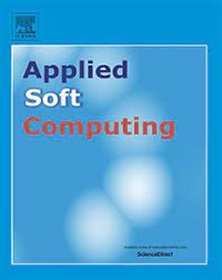Multi-view self-supervised learning on heterogeneous graphs for recommendation
IF 7.2
1区 计算机科学
Q1 COMPUTER SCIENCE, ARTIFICIAL INTELLIGENCE
引用次数: 0
Abstract
Graph neural networks (GNNs) have significantly contributed to data mining but face challenges due to sparse graph data and lack of labels. Typically, GNNs rely on simple feature aggregation to leverage unlabeled information, neglecting the richness inherent in unlabeled data within graphs. Graph self-supervised learning methods effectively capitalize on unlabeled information. Nevertheless, most existing graph self-supervised learning methods focus on homogeneous graphs, ignoring the heterogeneity of graphs and mainly considering the graph structure from a single perspective. These methods cannot fully capture the complex semantics and correlations in heterogeneous graphs. It is challenging to design self-supervised learning tasks that can fully capture and represent complex relationships in heterogeneous graphs.
In order to address the above problems, we investigate the problem of self-supervised HGNN and propose a new self-supervised learning mechanism for HGNN called Multi-view Self-supervised Learning on Heterogeneous Graphs for Recommendation (MSRec). We introduce a maximum entropy path sampler to help sample meta-paths containing structural context. Encoding information from diverse views defined by various meta-paths, decoding it into a semantic space different from own and optimizing tasks in both local-view and global-view contrastive learning, which facilitates collaborative and mutually supervisory interactions between the two views, leveraging unlabeled information for node embedding learning effectively. According to experimental results, our method demonstrates an optimal performance improvement of approximately 7% in NDCG@10 and about 8% in Prec@10 compared to state-of-the-art models. The experimental results on three real-world datasets demonstrate the superior performance of MSRec compared to state-of-the-art recommendation methods.
求助全文
约1分钟内获得全文
求助全文
来源期刊

Applied Soft Computing
工程技术-计算机:跨学科应用
CiteScore
15.80
自引率
6.90%
发文量
874
审稿时长
10.9 months
期刊介绍:
Applied Soft Computing is an international journal promoting an integrated view of soft computing to solve real life problems.The focus is to publish the highest quality research in application and convergence of the areas of Fuzzy Logic, Neural Networks, Evolutionary Computing, Rough Sets and other similar techniques to address real world complexities.
Applied Soft Computing is a rolling publication: articles are published as soon as the editor-in-chief has accepted them. Therefore, the web site will continuously be updated with new articles and the publication time will be short.
 求助内容:
求助内容: 应助结果提醒方式:
应助结果提醒方式:


